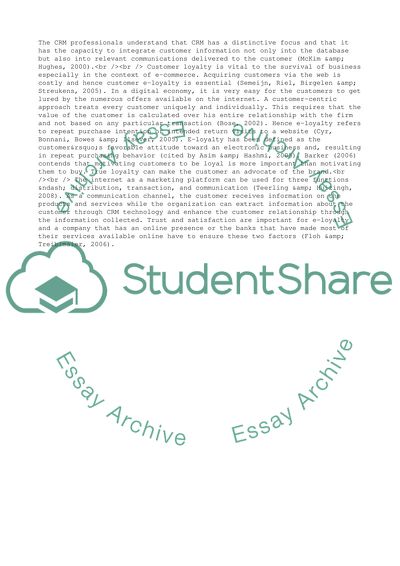Cite this document
(How Can Customer Relationship Management Be Used to Sustain E-Loyalty Term Paper, n.d.)
How Can Customer Relationship Management Be Used to Sustain E-Loyalty Term Paper. Retrieved from https://studentshare.org/management/1713920-how-can-crm-be-used-to-sustain-e-loyalty
How Can Customer Relationship Management Be Used to Sustain E-Loyalty Term Paper. Retrieved from https://studentshare.org/management/1713920-how-can-crm-be-used-to-sustain-e-loyalty
(How Can Customer Relationship Management Be Used to Sustain E-Loyalty Term Paper)
How Can Customer Relationship Management Be Used to Sustain E-Loyalty Term Paper. https://studentshare.org/management/1713920-how-can-crm-be-used-to-sustain-e-loyalty.
How Can Customer Relationship Management Be Used to Sustain E-Loyalty Term Paper. https://studentshare.org/management/1713920-how-can-crm-be-used-to-sustain-e-loyalty.
“How Can Customer Relationship Management Be Used to Sustain E-Loyalty Term Paper”. https://studentshare.org/management/1713920-how-can-crm-be-used-to-sustain-e-loyalty.


